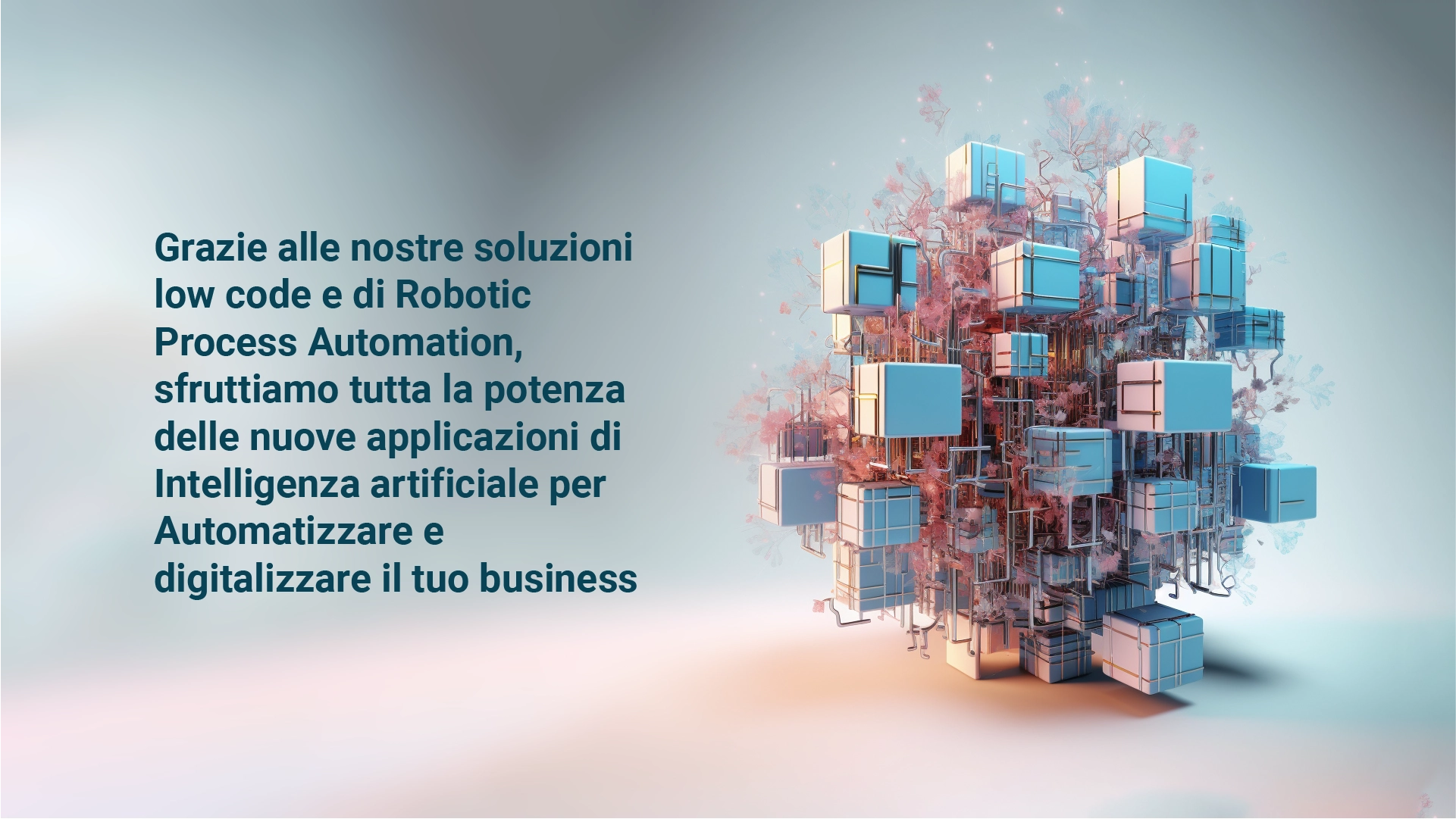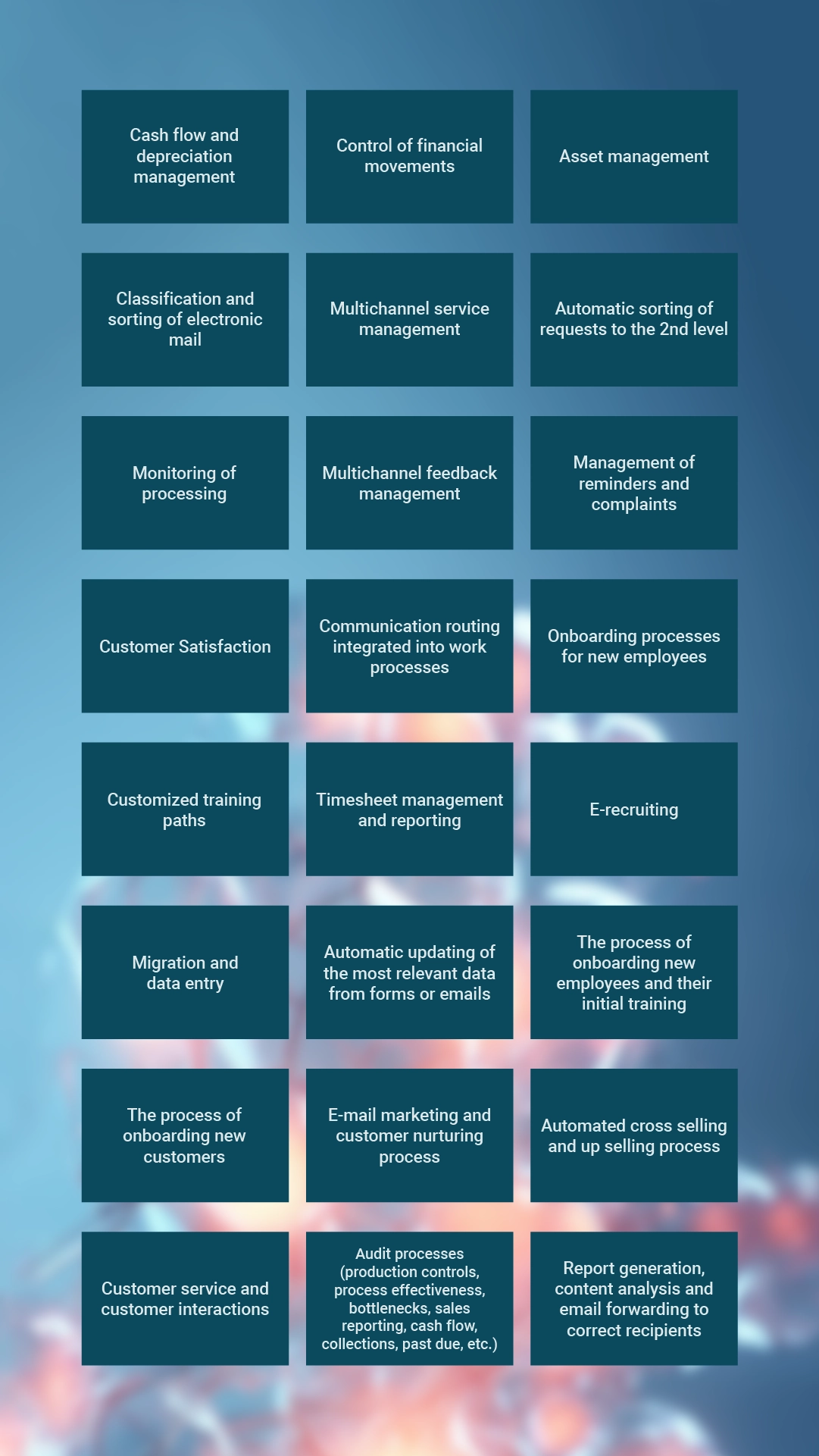Digitalization through Robotic Process Automation (RPA)
Innovation
Technology
Consulting
Home » Robotic Process Automation
What is Robotic Process Automation (RPA)
Robotic Process Automation (RPA) is a type of automation software designed to replace humans in repetitive, rule-based tasks. By digitizing all tasks, even elementary ones, RPA becomes a key enabler of an organization’s digital transformation.
According to popular reports from IT analysts, RPA is being hailed as the next IT revolution. No-code or low-code solutions are particularly promising, as they enable greater organizational efficiency without requiring deep technical expertise.
This is where RPA finds its application. According to a Gartner study, by 2025, 65% of companies will have adopted RPA technologies.

RPA refers to the use of software robots that automate repetitive tasks by interacting with digital applications and mimicking human actions. These robots simulate tasks such as clicking, typing, reading forms, and transferring data across systems—tasks typically handled by office staff.
RPA simplifies the creation, implementation, and management of these bots, which can interact with multiple digital systems autonomously. Robots replace human intervention in structured, rule-based processes—executing them faster, without errors, and continuously.
The benefits of RPA
- Simplification:
RPA streamlines workflows. It enables “quick-win” implementations by automating complex tasks involving multiple systems (ERP platforms, emails, spreadsheets, websites, etc.). - Flexibility:
Bots operate based on clearly defined rules and logic. Since they don’t make decisions, the number of exceptions they handle is low—making it easy to reshape processes as needs evolve. - Increased Productivity:
RPA handles time-consuming manual tasks faster and with higher precision than humans, working continuously without breaks. - Employee Satisfaction:
By freeing employees from tedious, repetitive tasks, RPA improves job satisfaction, allowing them to focus on more meaningful and engaging work. - Cost Reduction:
RPA significantly reduces operational costs. A robot can perform tasks at around 10% of the cost of a human doing the same work—while enhancing accuracy and allowing employees to focus on higher-value activities.
What skills do I need to introduce RPA into my organization?
RPA is transforming how organizations operate—making them more efficient without needing highly specialized technical skills.
Most RPA platforms use no-code or low-code environments, meaning that users familiar with office productivity tools and internal business processes can design and deploy bots in just a few hours.
Once deployed, bots can take over repetitive, low-value tasks such as accessing applications, moving files, organizing data, completing reports, and distributing them within the organization. As bots handle these routine tasks, employees can focus on higher-level responsibilities—like improving customer service and driving innovation.
Companies benefit from increased productivity, higher efficiency, and uninterrupted 24/7 service, since bots can operate around the clock.
Where Can I Apply RPA in My Company?
In many areas! RPA can automate and monitor up to 15 times more processes per day in a third of the time, while improving accuracy.

Here are some examples of the application of RPA software:
- Cash flow and depreciation management;
- Control of financial movements;
- Asset management;
- Electronic mail classification and sorting;
- Multi-channel service management;
- Automatic sorting of requests to the 2nd level;
- Monitoring of processing;
- Multichannel Feedback Management;
- Dunning and complaint management;
- Customer Satisfaction;
- Communication routing integrated into work processes;
- Onboarding processes for new employees;
- Customized training paths;
- Timesheet management and reporting;
- E-recruiting;
- Migration and data entry;
- Automatic updating of the most relevant data from forms or emails;
- The process of onboarding new employees and their initial training;
- The process of onboarding new customers;
- E-mail marketing and customer nurturing process;
- Automated cross selling and up selling process;
- Customer service and customer interactions;
- Audit processes (production controls, process effectiveness, bottlenecks, sales reporting, cash flow, collections, past due, etc.);
- Report generation, content analysis, and email forwarding to the correct recipients;
What are the benefits?
- 24/7 availability of self-service functions, managed through role-based authorization
- Full process traceability
- Real-time workload and execution monitoring
- Accurate and comprehensive data control
Conclusion
The potential applications of Process Automation are virtually endless—and the benefits are concrete and measurable.
If you’re curious to try an RPA tool yourself, you can search online for available platforms or explore Claudio by Automyo—a robust and user-friendly business process automation tool (we use it in many internal company processes ourselves).
Indice
Iscriviti alla newsletter
Indice
Iscriviti alla newsletter
Get more information
Home » Robotic Process Automation